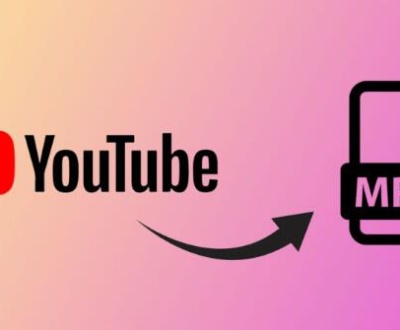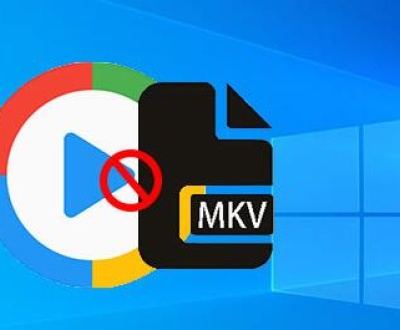When you encounter the message “Cannot find OS partition for Disk 0.” it means that the operating system (OS) on your primary hard drive (Disk 0) cannot be located. This could happen during the boot process or after a system crash. Typically, Disk 0 refers to the primary storage device where the OS is installed, such as the C: drive in a Windows operating system. If this partition is missing, corrupted, or otherwise inaccessible, the system cannot load the OS, leading to boot failures.
Causes of the Issue:
Corrupted or Missing Partition Table: If the partition table is corrupted, the operating system won’t be able to locate the partition it was installed on. This can happen after a power failure, improper shutdown, or disk errors.
Damaged Boot Configuration: Sometimes the boot configuration data (BCD) can become corrupted or misconfigured, preventing the system from booting from the correct partition.

Hardware Failure: Physical damage to the hard drive, such as failing sectors, can cause the system to lose access to critical partitions. In some cases, the disk might still function for storing data but fail to boot the OS.
Misconfigured BIOS/UEFI Settings: The BIOS/UEFI settings might be misconfigured, pointing to the wrong boot device. For instance, the boot priority might be set incorrectly, preventing the system from detecting Disk 0 as the primary boot drive.
Operating System Installation Issues: If the OS installation was incomplete or interrupted, the partition might not have been created properly or could have been corrupted during the setup process.
Deleted or Lost Partitions: It’s also possible that the OS partition was deleted or became unallocated, either accidentally or due to an incorrect operation (such as deleting the wrong partition during disk management or formatting).
Troubleshooting Steps:
To address the “Cannot find OS partition for Disk 0” error, follow these troubleshooting steps:
1. Check BIOS/UEFI Settings:
The first step in troubleshooting any boot issue is to ensure that the BIOS/UEFI is configured correctly. Here’s how you can check it:
Restart the computer and enter the BIOS/UEFI settings by pressing a key during the boot process (usually F2. Delete, Esc, or F10).
Check Boot Order: Ensure that the primary boot device is set to the correct hard drive (Disk 0). If it’s not, change the boot priority to boot from the correct disk.
Check Disk Detection: Ensure that Disk 0 is recognized in the BIOS/UEFI. If the disk is not detected at all, this might indicate a hardware issue with the disk or the connection (e.g., a loose cable or faulty SATA port).
Check SATA Mode: In some cases, the SATA controller mode (AHCI, RAID, IDE) might be misconfigured. Make sure it matches the setting used when the OS was originally installed.
2. Use Windows Recovery Environment (WinRE):
If your system can’t find the OS partition during boot, you can attempt to repair the boot process using the Windows Recovery Environment.
Insert a Windows Installation Media (USB or DVD) into the system.
Boot from the installation media (use the BIOS/UEFI to select the installation media as the primary boot device).
Once the Windows installation screen appears, select Repair your computer.
In the recovery options, select Troubleshoot > Advanced options.
Try these tools to repair the issue:
Startup Repair: This tool will automatically attempt to fix issues related to missing or corrupted boot files.
Command Prompt: You can run commands such as:
bootrec /fixmbr (to repair the master boot record)
bootrec /fixboot (to repair the boot sector)
bootrec /rebuildbcd (to rebuild the boot configuration data)
chkdsk C: /f (to check and repair file system errors on the OS partition)
3. Check for Disk Errors:
If the disk is accessible in the BIOS/UEFI but the OS partition is still not found, the problem could be related to disk corruption or bad sectors. Use the following methods to check the disk:
Use CHKDSK in Command Prompt: From the Windows Recovery Environment, open Command Prompt and type the following command:
bash
chkdsk C: /f
This command will scan the OS partition (C:) for errors and attempt to fix them.
Third-Party Disk Tools: If the disk is severely corrupted, you might need to use third-party disk repair utilities like HD Tune, CrystalDiskInfo, or EaseUS Partition Master. These tools can scan for bad sectors or partition issues.
4. Recover the Partition Using Data Recovery Software:
Panda Assistant supports a wide range of file types, including documents, photos, videos, and audio files. It is compatible with multiple operating systems, such as Windows and macOS, and can recover data from a variety of storage media, including hard drives, SSDs, USB drives, and memory cards. The software offers advanced scanning options to identify and recover files from damaged or inaccessible partitions, even when the system is unable to boot.
In addition to its recovery capabilities, Panda Assistant also provides a set of useful tools for disk management, file repair, and backup. Its secure data recovery process ensures that your files are retrieved safely without further damage or loss. Whether you’re facing a simple deletion error or a more complex storage failure, Panda Assistant provides the solutions you need to recover your important data quickly and efficiently.
5. Rebuild the Master Boot Record (MBR):
The Master Boot Record (MBR) is a critical part of the boot process. If it is damaged, the system won’t be able to find the OS partition. You can try to rebuild the MBR using the Windows Recovery Environment.
Open Command Prompt from the Advanced Options menu.
Run the following command:
bash
bootrec /fixmbr
This will attempt to fix the MBR, which might solve the issue of the OS partition not being found.
6. Check for Physical Disk Damage:
If the disk is not being detected by the BIOS or recovery environment, the problem could be physical. Try the following steps:
Check cables and connections: Ensure that the data and power cables connected to the hard drive are secure. You might also try different SATA ports or cables.
Test the hard drive on another system: If possible, connect the hard drive to another computer to see if it can be detected. If the drive is not recognized on another system, it may be physically damaged.
Use a USB-to-SATA Adapter: If the hard drive is an internal drive, use a USB-to-SATA adapter to connect it externally to another computer. This can help determine if the drive itself is functional.
7. Perform a System Restore or Reset:
If the OS partition is still missing and you are unable to recover it, you may need to perform a system restore or a reset. You can restore the system to a previous working state if restore points are available:
In the Windows Recovery Environment, select Troubleshoot > Advanced options > System Restore.
If System Restore doesn’t work, consider performing a Reset This PC operation, which will reinstall the operating system but may delete your personal files.
8. Professional Data Recovery Services:
If all else fails, and the OS partition is still missing or corrupted, it may be necessary to contact professional data recovery services. These services can attempt to recover data from a damaged or corrupted hard drive, including restoring lost partitions or fixing physical damage.
About us and this blog
Panda Assistant is built on the latest data recovery algorithms, ensuring that no file is too damaged, too lost, or too corrupted to be recovered.
Request a free quote
We believe that data recovery shouldn’t be a daunting task. That’s why we’ve designed Panda Assistant to be as easy to use as it is powerful. With a few clicks, you can initiate a scan, preview recoverable files, and restore your data all within a matter of minutes.
Subscribe to our newsletter!
More from our blog
See all postsRecent Posts
- How to repair my usb flash drive 2025-05-09
- How to search folder in file explorer 2025-05-09
- How to search for duplicates in file explorer 2025-05-09

 Try lt Free
Try lt Free Recovery success rate of up to
Recovery success rate of up to









